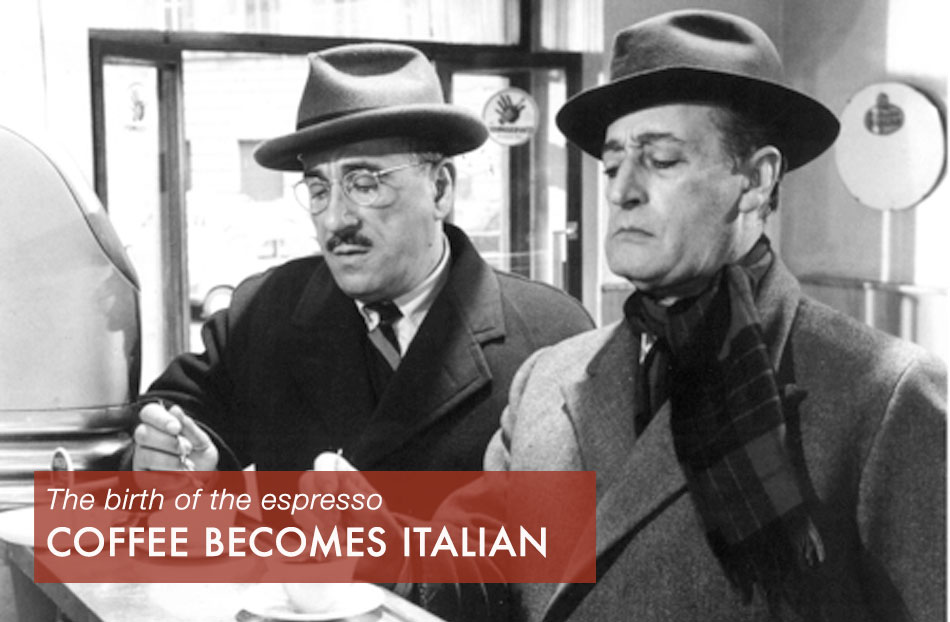

The Neapolitan coffee maker
Even older than the moka pot and equally well-known is the so-called Neapolitan coffee maker. Similar in appearance to the moka pot, it primarily differs from it as regards the coffee-making procedure. When the water placed in the bottom part starts to boil, the pot is removed from the heat and turned upside down so that the water starts to filter through the coffee in the middle and collects in the receptacle complete with a spout, ready for serving.
Watch the video 
Top: Totò and Peppino in a scene from the film The Band of Honest Men, 1956
The Italian love of coffee is well known and the Italian espresso is much appreciated the world over. The espresso was born in Turin in 1884 thanks to the invention of Angelo Moriondo, who patented the machine for making the drink by means of percolation with hot water subjected to high pressure. This machine made it possible to prepare coffee in just a few seconds, a need that seemed particularly pressing to Moriondo who managed the Grand-Hotel Ligure and the American Bar in Turin.
At home the espresso began to spread following the invention, in 1933, of the Moka Express designed by Alfonso Bialetti, who had an aluminium foundry in Crusinallo, in the Verbano area. This moka pot, which forms part of the permanent collection at the Museum of Modern Art in New York, is essentially made up of three separate parts: the boiler, with safety valve; the funnel-shaped filter, where the ground coffee is placed; and the cup that screws onto the water tank and contains the coffee as it emerges from the spout. It has an unmistakable faceted design, which is still the same today.
